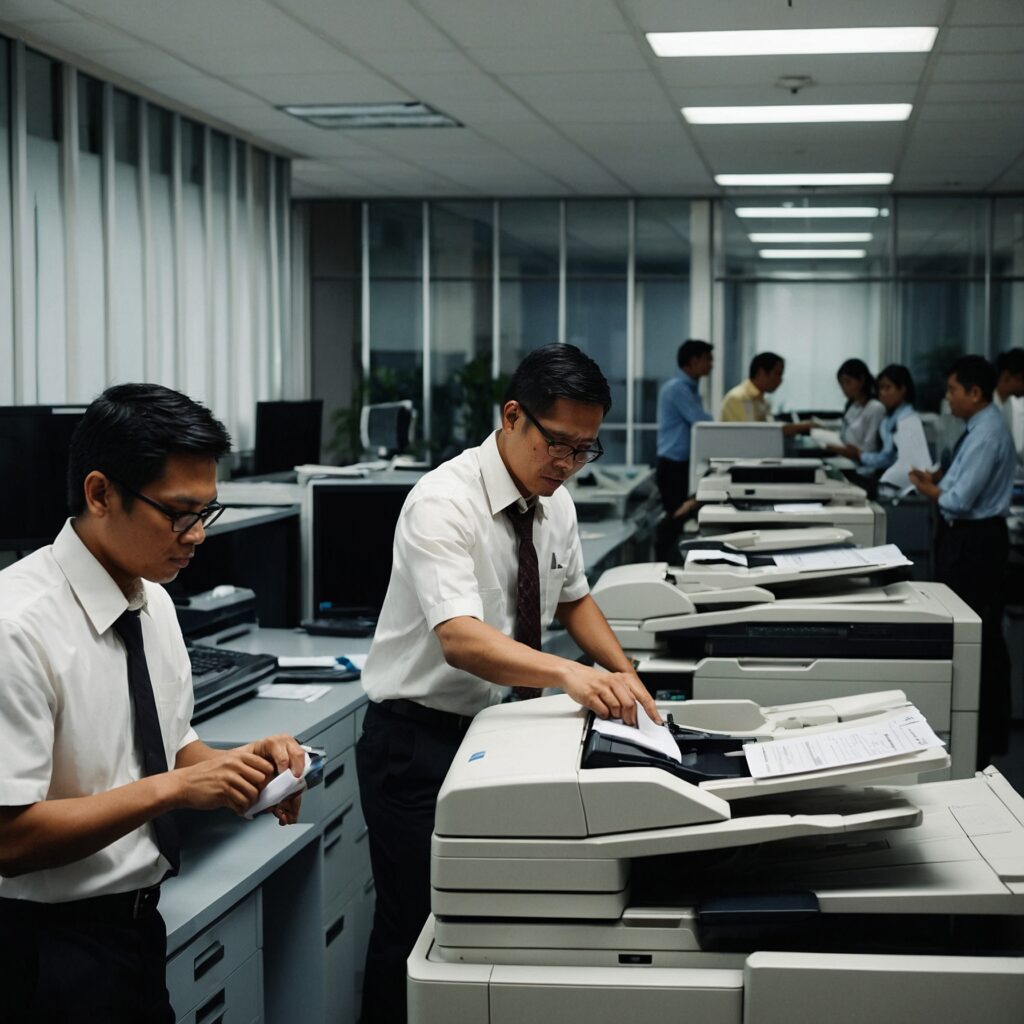
Renting vs. Other Solutions: Which One is Best for Your Business?
In today’s fast-paced business environment, companies are constantly looking for cost-effective and flexible ways to manage their office equipment needs. One common dilemma faced by many organizations is choosing between renting vs. other solutions, such as buying outright or leasing equipment. This blog post explores the pros and cons of renting compared to other alternatives, helping you make an informed decision tailored to your business needs.
Understanding the Options: Renting vs. Other Solutions
Before diving into the comparisons, it’s essential to understand what “other solutions” typically mean:
Buying Outright: Purchasing the equipment with a full upfront payment.
Leasing: Entering a contract to use equipment for a fixed period with monthly payments, often with an option to buy at the end.
Renting: Short- or long-term use of equipment, usually with more flexibility than leasing.
Each of these solutions offers different advantages and drawbacks, depending on your business goals, budget, and operational needs.
Benefits of Renting
1. Lower Initial Costs
Renting equipment usually requires little to no upfront payment, freeing up your capital for other priorities. Unlike buying, which demands a hefty initial investment, renting helps you preserve cash flow.
2. Flexibility and Scalability
Businesses often experience fluctuating workloads or seasonal demands. Renting allows you to scale up or down quickly without long-term commitments. This is ideal for startups, project-based companies, or businesses experimenting with new markets.
3. Maintenance and Support Included
Many rental agreements cover maintenance and repairs, reducing the headache and expense of equipment upkeep. This contrasts with buying, where you assume full responsibility for maintenance.
4. Access to the Latest Technology
Technology evolves rapidly. Renting lets you upgrade easily to newer models without the hassle of reselling outdated equipment, keeping your business competitive.
Challenges of Renting
While renting offers numerous advantages, it may not always be the ideal choice:
Long-Term Costs: Over extended periods, rental fees can add up to more than the cost of buying.
No Ownership: You do not build equity or ownership of the equipment.
Contract Restrictions: Some rental contracts may have specific terms, such as minimum rental periods or usage limits.
Comparing Buying Outright
Advantages
Ownership: Full control of the equipment with no ongoing payments.
Tax Benefits: Depreciation and other tax deductions may apply.
No Contractual Restrictions: Freedom to use the equipment as you see fit.
Disadvantages
High Upfront Costs: Significant capital is tied up in assets.
Obsolescence Risk: Equipment can quickly become outdated.
Maintenance Responsibility: All upkeep costs fall on the business.
Leasing: The Middle Ground
Leasing combines elements of renting and buying. It typically involves fixed monthly payments over an agreed period, often with an option to purchase the equipment afterward.
Advantages
Predictable Payments: Easier budgeting with fixed lease fees.
Lower Initial Costs: Compared to buying outright.
Potential to Own: Option to buy the equipment at lease-end.
Disadvantages
Longer Commitment: Lease terms are usually fixed and longer than rental periods.
Usage Restrictions: Some leases limit how much you can use or modify the equipment.
Possible Extra Fees: Penalties may apply for early termination or excessive wear.
Which Solution Fits Your Business?
Choosing between renting vs. other solutions depends largely on your business size, financial position, and operational needs. Here are some considerations:
| Business Type | Recommended Solution | Why? |
|---|---|---|
| Startup or Small Business | Renting | Low capital requirement and flexibility |
| Established Business | Leasing or Buying | Predictable costs and potential for ownership |
| Seasonal or Project-Based Work | Renting | Ability to scale equipment usage up or down easily |
Case Study: Renting for Remote Work Setups
With the rise of remote work, many businesses have shifted to flexible equipment arrangements. Renting printers and copiers allows companies to equip home offices without permanent investments.
For more on this, check out the article on Benefits of Short-Term Copier Rentals, which discusses how renting meets the demands of a flexible workforce.
Cost Considerations: Renting vs. Buying
A cost analysis reveals that renting is often more affordable upfront but may cost more over many years. Buying has higher initial costs but lower long-term expenses.
Learn more from this detailed Cost Analysis of Short-Term Copier Rentals.
Risks and Contractual Details
Regardless of your choice, understanding contract terms is critical. Rental agreements often specify maintenance, liability, and termination clauses.
For guidance on protecting your interests, see How to Negotiate Rental Terms.
Conclusion
Choosing between renting vs. other solutions is a strategic decision that impacts your business finances, operations, and flexibility. Renting offers flexibility, lower upfront costs, and ease of maintenance, making it suitable for many modern businesses—especially those with changing needs or limited capital.
However, buying and leasing also offer distinct advantages like ownership and predictable costs.
Whatever you decide, ensure you review contracts carefully and select a provider that supports your business goals.
For more information and expert advice on copier and printer rentals, visit the Marga Enterprises homepage. Stay connected with us through our social media channels:
Facebook: facebook.com/margaenterprises
YouTube: youtube.com/margaenterprises
Or contact us directly at:
Mobile/CP: +63 912 345 6789
Telephone: (02) 1234 5678
If you want a tailored solution that fits your unique business needs, reach out today!
